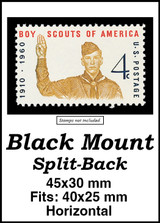U.S. #1710
1977 13¢ Lindbergh Flight
Issue Date: May 20, 1977
City: Roosevelt Station, NY
Quantity: 208,820,000
Printed By: Bureau of Engraving and Printing
Printing Method: P... more
U.S. #1710
1977 13¢ Lindbergh Flight
Issue Date: May 20, 1977
City: Roosevelt Station, NY
Quantity: 208,820,000
Printed By: Bureau of Engraving and Printing
Printing Method: Photogravure
Perforations: 11
Color: Multicolored
U.S. #1710 commemorates the 50th anniversary of Charles Lindbergh’s historic solo transatlantic flight from New York to Paris.
Charles A. Lindbergh (1902-74)
Since 1919, a New York City hotel owner, Raymond Orteig, had offered a $25,000 reward to the first pilot to fly non-stop across the Atlantic Ocean. Several pilots attempted to earn this prize, but all failed – some were injured or even killed.
In 1927, this unclaimed prize came to the attention of a talented young pilot, Charles A. Lindbergh. Lindbergh was an Army-trained pilot who flew the mail route between St. Louis and Chicago. He believed that the trip was possible with the right plane. Lindbergh convinced a group of St. Louis businessmen to give him the financial support he needed to build a special airplane of his own design. He named the plane the Spirit of St. Louis.
On May 20, 1927, at 7:52 A.M., Lindbergh took off in the Spirit of St. Louis from Roosevelt Field, located near New York City. Thirty-three-and-a-half hours later, he landed near Paris at Bourget Field. A huge crowd of people had gathered to greet Lindbergh and celebrate his historic accomplishment. Lindbergh’s daring flight made him an international celebrity and a respected authority on aviation.
Charles Lindbergh, Airmail Pilot
On April 15, 1926, Charles Lindbergh made his first airmail flight.
When the US Airmail service was inaugurated in 1918, the Post Office Department oversaw the delivery of the mail. Then in 1925, Congress passed the Kelly Act, which allowed the post office to work with commercial air carriers to create new airmail routes and deliver the mail.
The first two contract airmail routes went into service on February 15, 1926, flying between Detroit and Cleveland and Detroit and Chicago. Charles Lindbergh, who was already an experienced pilot at the age of 24, was then hired by the Robertson Aircraft Company to develop a third route, which was known as Contact Airmail Route #2. This route would fly from Chicago to St. Louis, with stops in Springfield and Peoria.
In the months leading up to the start of the service, Lindbergh surveyed the 278-mile route, establishing the flight and postal operations at each of the four landing fields. He also selected nine additional emergency landing fields, each about 30 miles apart. Lindbergh also hired two of his Army flying friends to help him complete the flights.
Days before the inaugural flight, on April 10, 1926, Lindbergh and his team completed survey flights to make sure everything was in order and to help general public interest in the upcoming flight. Then at 5:50 a.m. on April 15, 1926, Lindbergh inaugurated the first flight of the new line, departing Chicago with 87 pounds of mail. All of the covers carried a special commemorative cachet.
From there, Lindbergh flew south to Peoria where he picked up another 23 pounds of mail. He then stopped in Springfield and picked up 93 pounds of mail before completing the last leg of his journey, reaching St. Louis at 9:15 am.
That afternoon, Phil Love made the return flight back to Chicago. Because the morning flight had generated so much interest, the evening flight carried a large load – 144 pounds from St. Louis alone. Lindbergh and another pilot also departed St. Louis in empty planes, as they expected a large amount of mail in Springfield. And there was! A large crowd had assembled at the field to watch the pilots and they sent out a total of 385 pounds of mail. After picking up 40 pounds of mail in Peoria, the return trip reached Chicago at 7:15 p.m.
Lindbergh worked as an airmail pilot for 10 months, flying five days a week. On two occasions he was forced to bail out of his plane. On September 16, 1926, his plane ran out of fuel before he could reach Chicago and he had to jump out of the plane over Wedron, Illinois. His 4,000-foot parachute jump was the longest recorded night jump at that time. Two months later, on November 3, he had to jump out of his plane due to bad weather and landed on a barbed wire fence.
It was while working as an airmail pilot that Lindbergh first heard about hotel owner Raymond Orteig’s $25,000 prize for the first pilot to fly non-stop across the Atlantic. Just a little over a year after he began his airmail career, Lindbergh became an international celebrity for completing the journey in his plane, the Spirit of St. Louis.
Less 